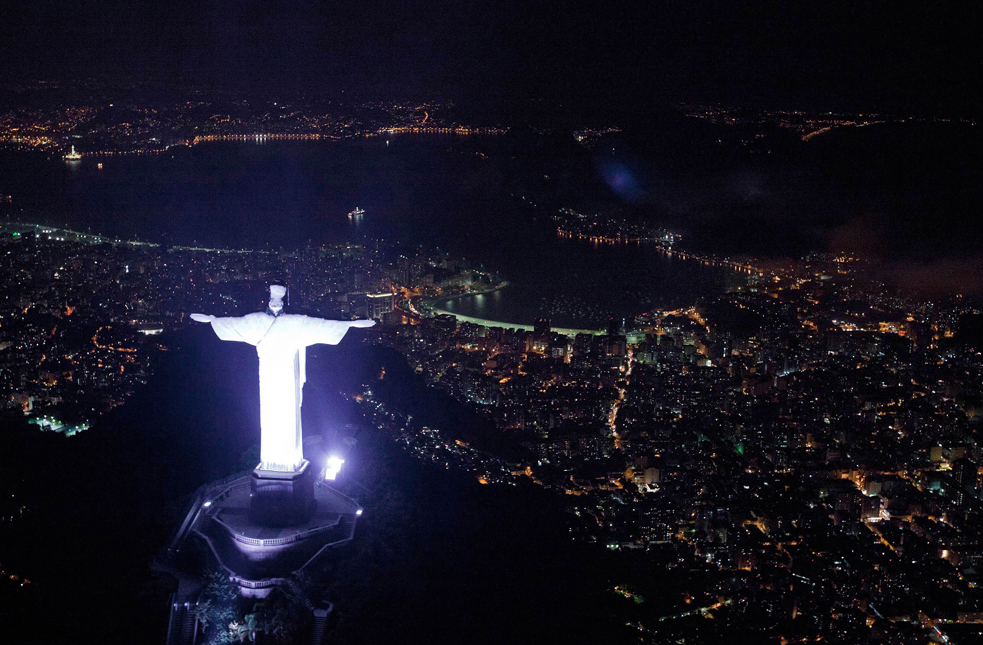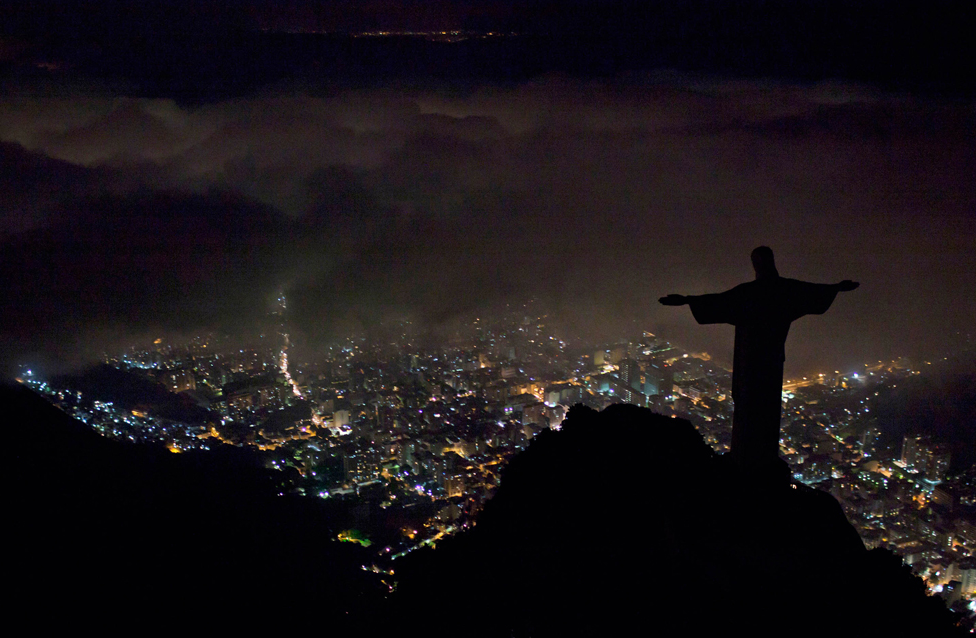Despite their routine, conventional, ritualized, and otherwise predictable nature, public media can mash up different topics with an ease that should make novelists growl with envy. Editorial cartoonists make the most of this everyday opportunity, but it pops up all over the place: politicians’ metaphors, athletes’ analogies, advertiser’s corny TV ads, and often enough a deft comparison in a letter to the editor. I’m not immune to temptation, either, and so today it’s time to talk about both Earth Hour and Stanley Fish.
No, that’s not Stanley, although I’m sure he wouldn’t mind having his statue overlooking a major city. This statue is labeled Christ the Redeemer and overlooks Rio de Janeiro. Very famous, dare we say iconic, and certainly one of the signature monuments that many cities now try to erect in order to brand themselves visually to attract tourism and other business. And so it becomes easy to say that it is both a religious and a cultural symbol, and perhaps more cultural than religious.
And that’s where Fish comes in. On Monday he posted on a peculiar decision by the European Court of Human Rights which ruled that Italy could place crucifixes in public schoolrooms because the cross is not primarily a religious symbol. You can read Fish’s account of the opinion, and the opinion itself, but I’m not really concerned about either. What is interesting is the debate about when a symbol should be seen as more parochial or more general, as something dedicated to a specific group or something in common circulation, as exclusionary or assimilated. Examples include everything from the Confederate Flag–which I would prefer to see as a sign of treason, but few seem to concur–to “In God We Trust” and other bits of civil religion.
And that’s where Earth Hour can help. On Saturday night, March 26, thousands of organizations and individuals around the world turned off their lights (well, most of them) for an hour to symbolize support for energy conversation. (I was in Paris when the Eiffel Tower went dark. The experience did not strengthen my commitment to sustainable energy.) This week The Big Picture has put up a gallery of before and during photos. The comparisons, and the digital mechanism for making them, are interesting, but one pairing goes further.
Incredible, isn’t it? One could almost title it “Christ, Prince of Darkness.” The city looks like Hell, glowing embers of eternal misery from which rises an awful miasma of vapors, while darkness surrounds everything, shrouding all hope. Or not: perhaps some will see a real Christ, and one who offers not salvation but rather compassion, not escape but rather God’s presence amidst the suffering. And one who may be present only because he has agreed to be powerless.
Now go back to the first photograph. I see only kitsch: it might as well be in a snow globe. The official, illuminated symbol has no religious depth. How could it? That doesn’t mean that it won’t be exceedingly meaningful when seen by some believers, especially for the first time. But those responses are drowned in the sea of indifference–or, better, obliterated in the bright lights and endless repetition of civic branding. When illuminated, it is reduced (although not completely) to being a cultural symbol. Only when the lights are turned off, for a moment not to be repeated for a year, can religious meaning come to the fore. How do we know? Because only then are we confronted with our finitude, our fatality, and the dim prospects for achieving heaven on earth. Come to think of it, not a bad message for Earth Hour.
Photographs by Felipe Dana/Associated Press.


Discussion